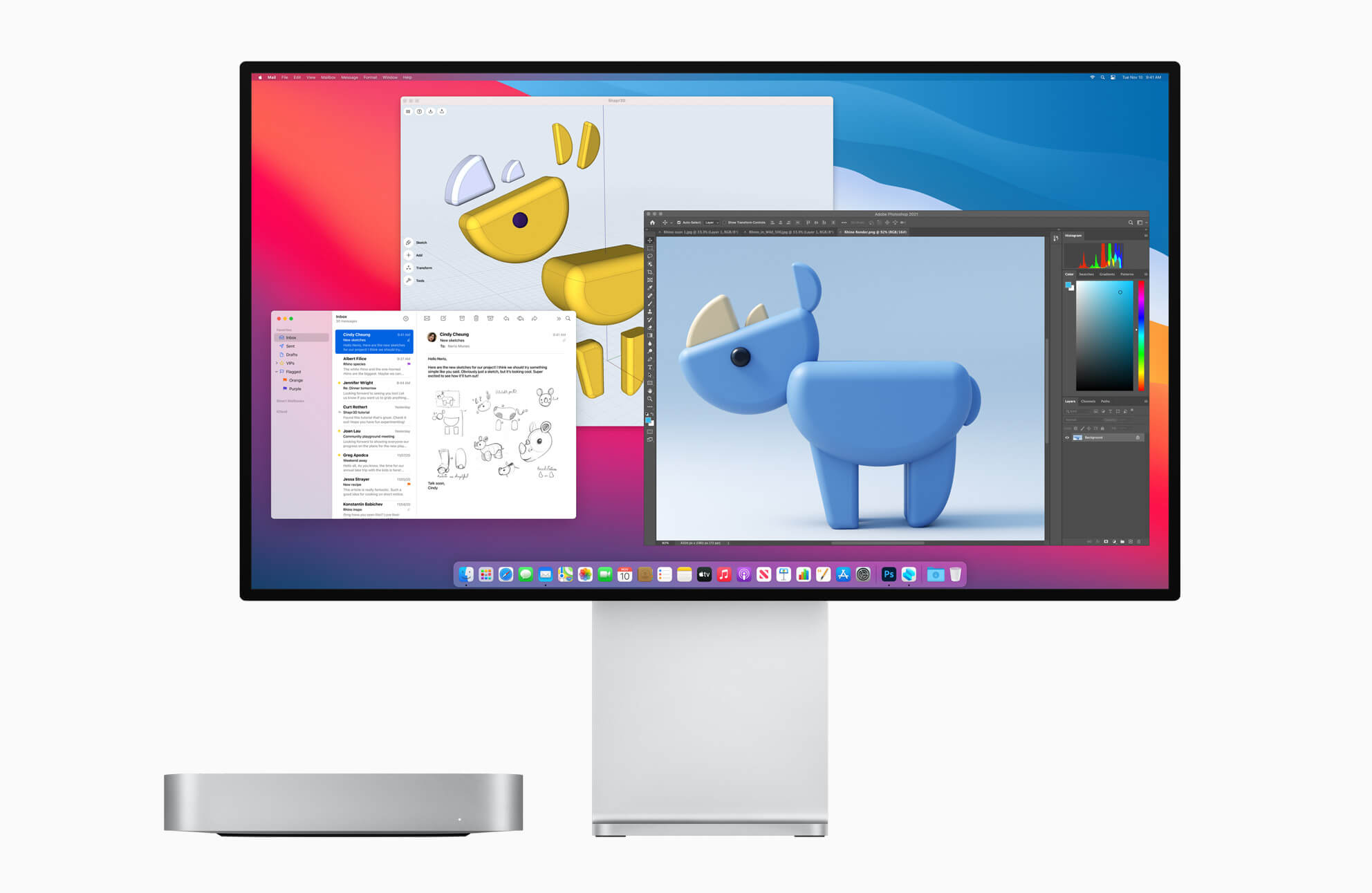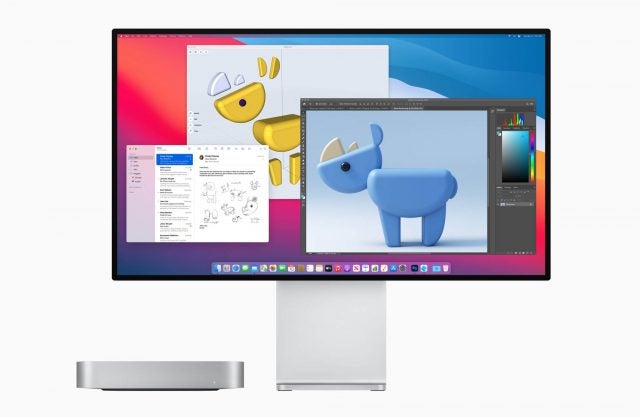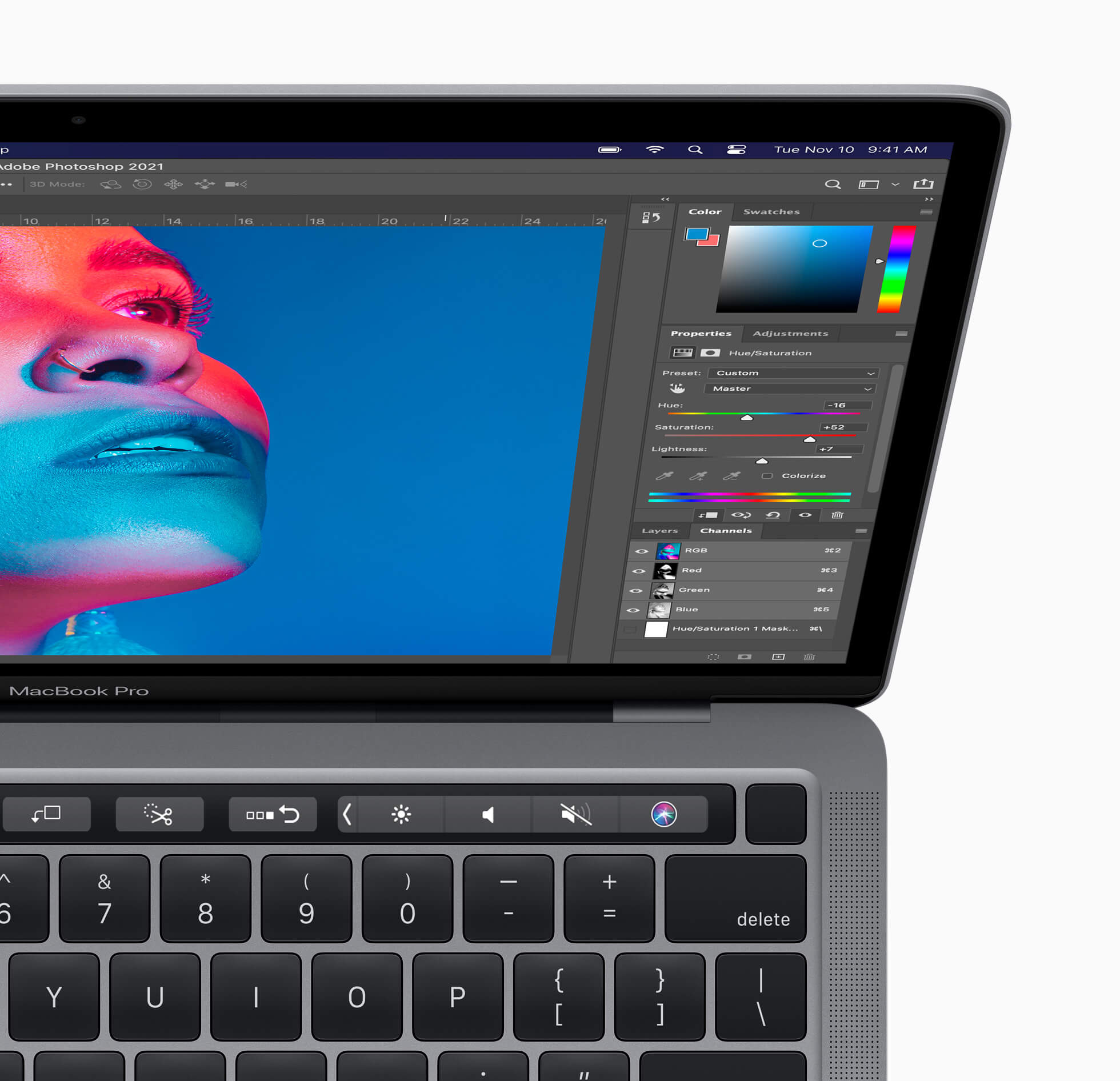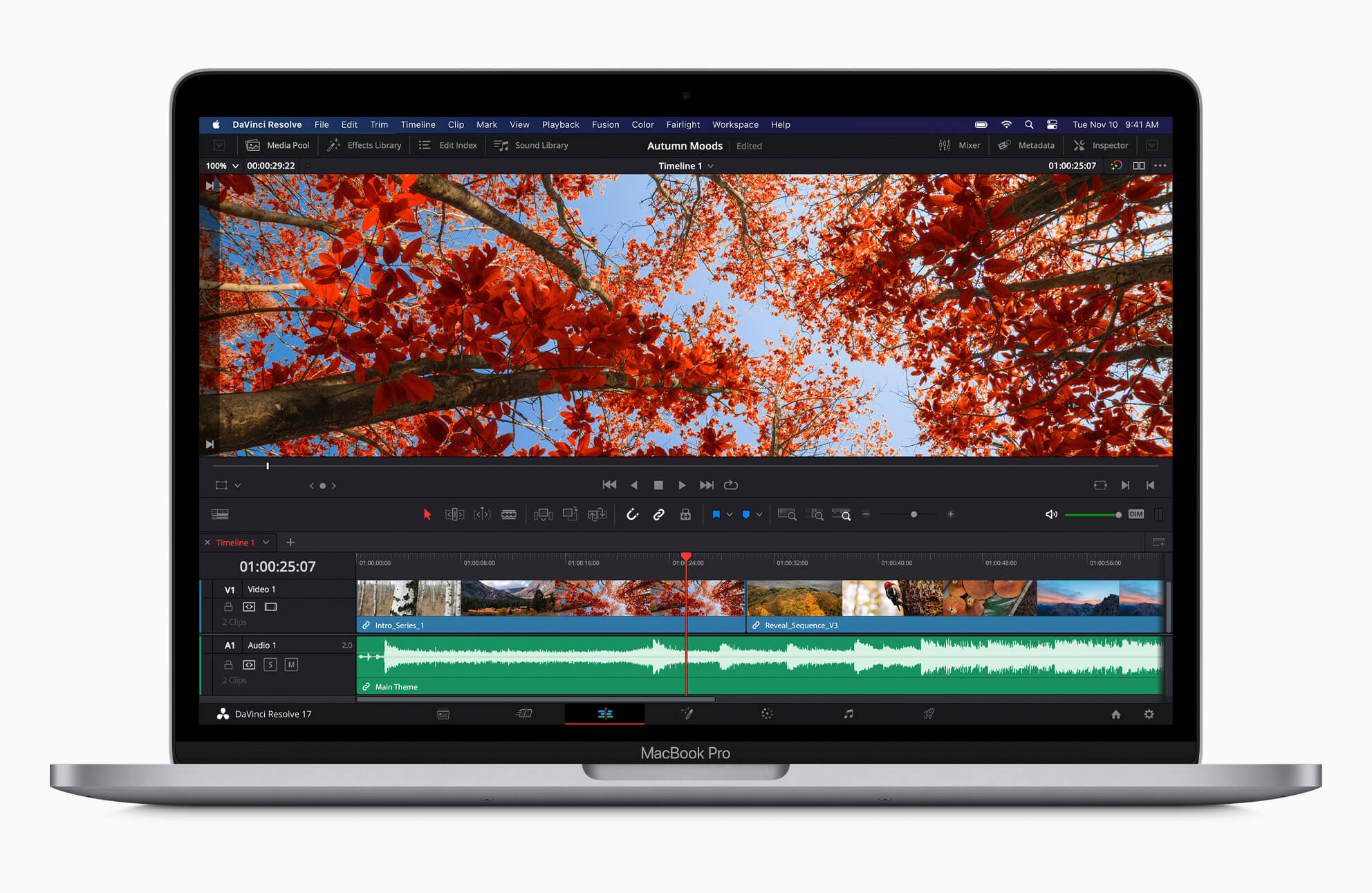Apple’s latest event has debuted its 2020 MacBook Air, 2020 Mac Mini, and 2020 MacBook Pro — which are all available to order today, and will ship next week.
They’re powered by the M1 chip, the most efficient chip Apple has ever created, and run on the new macOS 11, Big Sur, which is designed specifically for M1. Here are the chip’s specs, as well as how it will massively boost the performance of the new generation of Macs.
The M1 Chip
The new processor has eight cores. This includes four of the world’s fastest along with four of the most efficient cores. It’s a 5nm processor, based on Apple’s A14 Bionic, but thanks to its compact design, it boasts a better performance per watt than any other CPU in the world.
With the new chip, Macs now power on instantly when opened, and are nearly two times more responsive. 3D animation rendering and raw video footage editing will work in real time, and graphically intensive games will also work smoothly, all with better battery life.
And thanks to the Rosetta 2 emulator, any Mac with Big Sur will be able to run any iOS and iPadOS apps natively on its macOS.
2020 MacBook Air
Speed and performance are better than ever with the latest MacBook Air model, even though this model has also cut out that noisy fan. Yes, you read that right. The lack of a fan is probably all that the average person will retain about this new Air.
This model is Apple’s best mobile option, staying lightweight but with a strong battery. It’s fast, too: The new Air has a GPU that’s five times faster than the last Air, and the device is in fact faster than 98% of PCs sold in the last year.
So how good is the battery life? It’ll last up to twice as long on a single charge, which is the most battery life a MacBook Air has ever seen. You should expect 15 hours of wireless web browsing, and 18 hours of video playback on a single charge.
Apple’s new image processor is also included, offering better white balance, with face detection for your Zoom calls. The device also has Touch ID and Apple Pay.
Specs include:
- 13.3-inch retina display with P3 wide color gamut support
- up to 16GB memory
- Up to 2TB storage
- 720p camera
- Support for Thunderbolt, USB 4, and Wi-Fi 6
Prices start at $999, and $899 for education. It’s on sale today and ships next week.












2020 Mac Mini
The new Mac Mini also debuted, and it’s making great use of the M1 chip as well.
One of the biggest benefits: The new Mac Mini has six times faster graphics than the previous 2018 model. Granted, this sounds a little more impressive before you realize just how much the last model’s graphics sucked. But the jump in graphics does address just about the only problem consumers had to complain about with the Mini.
Performance is also up, with rendering in Final Cut Pro as much as six times faster and Xcode compiling up to three times faster. Apple’s going for Microsoft’s jugular, too, claiming that “when compared to the best-selling Windows desktop in its price range, the Mac Mini is just one-tenth the size, yet delivers up to five times faster performance.”
Additional specs include:
- An “advanced thermal design”
- Up to two external displays including Apple’s Pro Display XDR in full 6K resolution
- Supports Thunderbolt, USB 4, Wi-Fi 6
The new Mini starts at $699, which is a drop of $100 from the previous model. It’s also on sale today and ships next week.










2020 MacBook Pro
The new 13-inch MacBook Pro is replacing the previous entry-level model (not the high-end one), and it’s Apple’s M1 workhorse.
It has the best battery life ever seen in a Mac, with an impressive 17 hours of web browsing and 20 hours of video playback on one charge, which doubles the previous model’s performance and gives this model the best battery of any Mac, ever.
The CPU is as much as 2.8 times faster than the last generation, while the 8-core GPU is up to five times faster. Apple claims that overall, its new 13-inch MacBook Pro is now the world’s fastest compact pro notebook.
Additional specs include:
- Studio-quality mics
- Apple’s latest camera ISP (included in the M1 chip)
- Secure Enclave
- Support for “more peripherals than ever,” including Apple’s Pro Display XDR in full 6K resolution
- Retina display
- Magic Keyboard
- Support for Thunderbolt, USB 4, and Wi-Fi 6
- 3-lb compact design
The new Pro starts at $1,299 with $1,199 for education. It’s available today, shipping next week.
Should You Buy the Next Macs?
Definitely. They’re undeniably better in all respects, from speed to battery to pricing. Costs are either remaining the same as the previous generation or in the case of the Mini, dropping even lower.
In short, as long as Apple’s claims hold up, this is a very promising start to their transition to homebrewed processors for all their Macs moving forward. The experts agree, too:
“It was surprising to see Apple announce three products to showcase its new Arm platform for Mac, I’d only expected one or two,” Wayne Lam, Senior Director of Research at CCS Insight Offering said in a statement to Tech.co. “Offering three products across different types of Mac computer products, Apple is clearly demonstrating the M1’s design versatility.”
The only downside to Apple’s new Macs is probably the fact that anyone who just bought a new Mac earlier this year will be annoyed they didn’t wait for these ones.


















